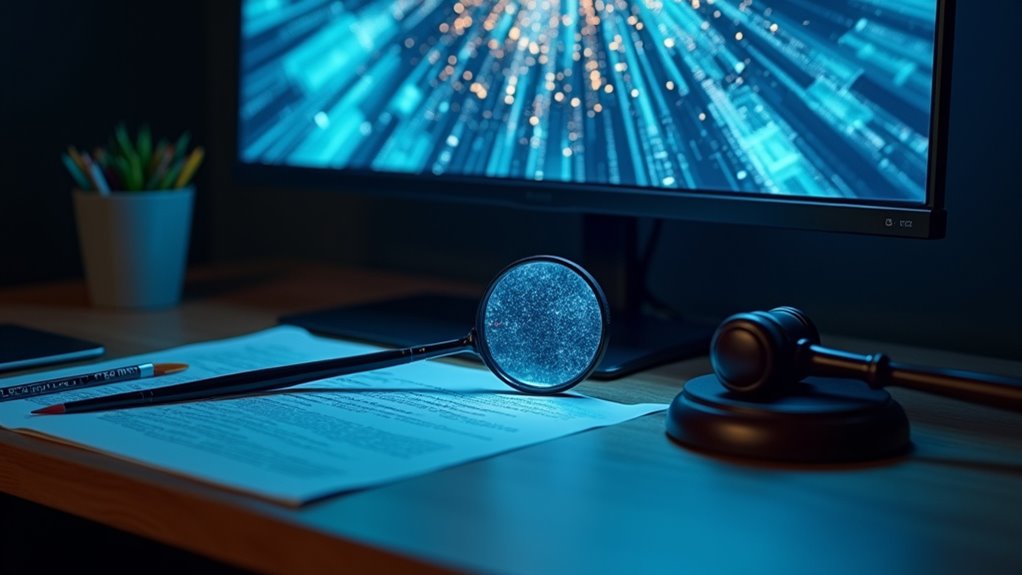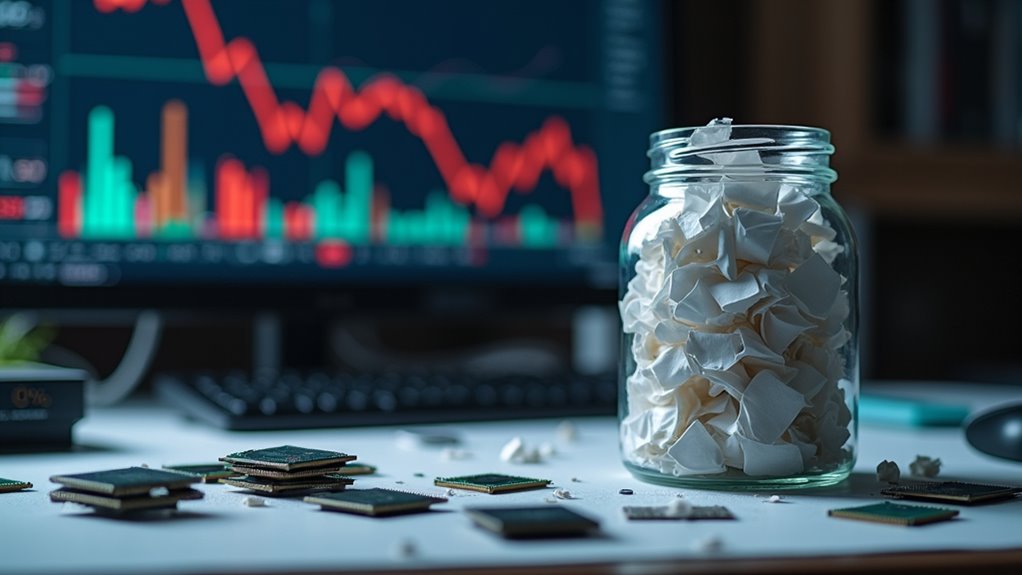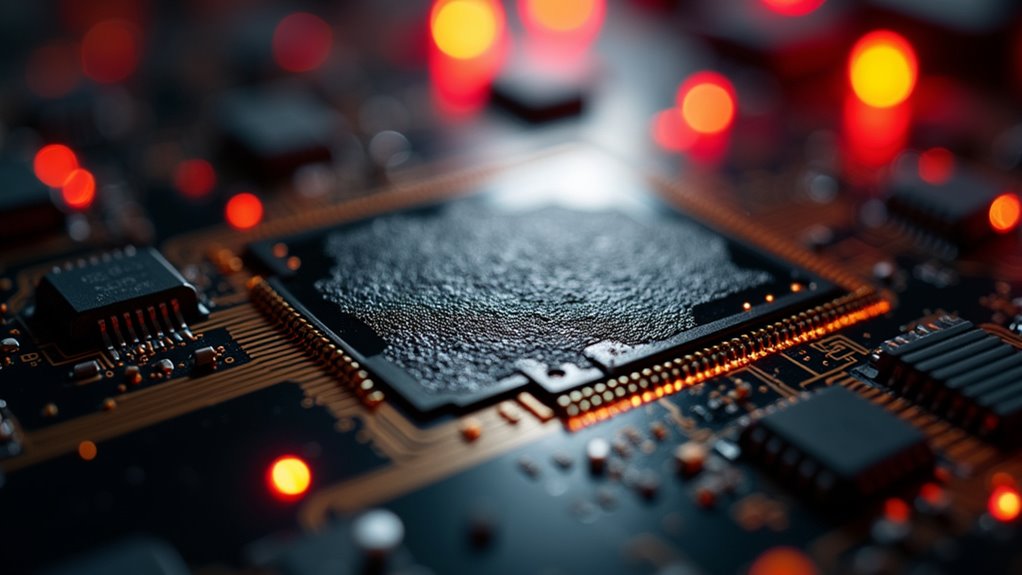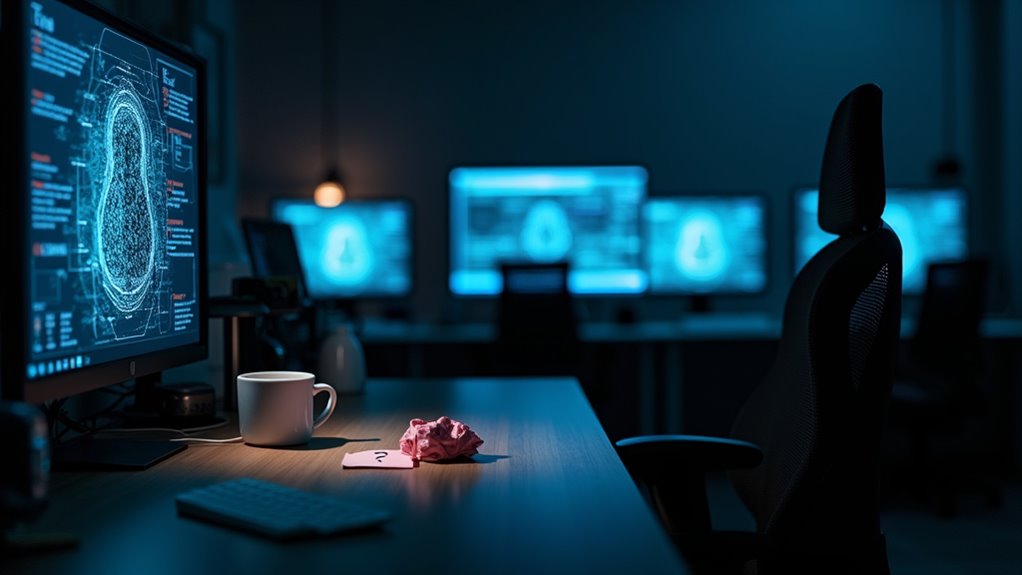AI creations haven’t exactly “earned” copyright protection—they’ve snuck through a loophole. While machines can’t hold copyrights themselves (sorry, Skynet), human-AI collaboration works can receive protection when there’s significant human creative input. Think of it as AI providing the muscle while humans supply the legal “spark.” Courts remain stubbornly human-centric about authorship, so creators must document their process and creative decisions. The devil, as they say, lies in the human details.
While technology races ahead at breakneck speed, US copyright law remains firmly anchored to a decidedly human-centric view of creativity. The Copyright Office has been crystal clear on this point—machines don’t get copyright protection, period. That AI-generated masterpiece your algorithm cooked up after consuming millions of Renaissance paintings? Sorry, legally worthless in copyright terms.
The law’s verdict is clear: no matter how brilliant the AI’s creation, without human hands on the wheel, copyright protection vanishes.
But here’s where things get interesting. AI creations haven’t been completely left out in the cold. They’ve found a backdoor into protection through human collaboration. Think of it as a creative buddy system: the human provides the spark, the AI provides the processing power.
When creators use AI as a tool—much like Photoshop but with steroids and a mind of its own—copyright protection may extend to the resulting work. The key word here is *tool*. Your detailed prompts to DALL-E alone won’t cut it, no matter how poetic or precise they might be.
The standard for protection hinges on meaningful human creative input. Did you select, arrange, or modify the AI output in ways that reflect your creative vision? Did you curate multiple generations into something new? These human touches could be your golden ticket to copyright protection. This approach addresses the ownership questions that plague AI-generated content, giving creators clearer guidance in an otherwise murky legal landscape.
Courts have consistently upheld this human-first approach. Remember Dr. Thaler and his AI-created artwork? His copyright application crashed and burned precisely because he admitted a machine did all the creative heavy lifting.
The 2024 and 2025 Copyright Office reports didn’t rock the boat—they reinforced the status quo. AI outputs need significant human involvement to qualify for protection. The U.S. Copyright Office affirmed that existing copyright principles can apply to AI technology, but only when human authorship is evident.
This legal standard was recently reaffirmed by an August 2023 Washington D.C. court ruling that emphasized only human beings can qualify as authors under U.S. copyright law.
What does this mean for you, aspiring AI-human creative duo? Document your process. Be clear about your creative contributions. Think of AI as your assistant, not your replacement. The law may be traditional, but it’s not completely closed to the possibilities of human-AI collaboration—as long as humans remain firmly in the creative driver’s seat.








